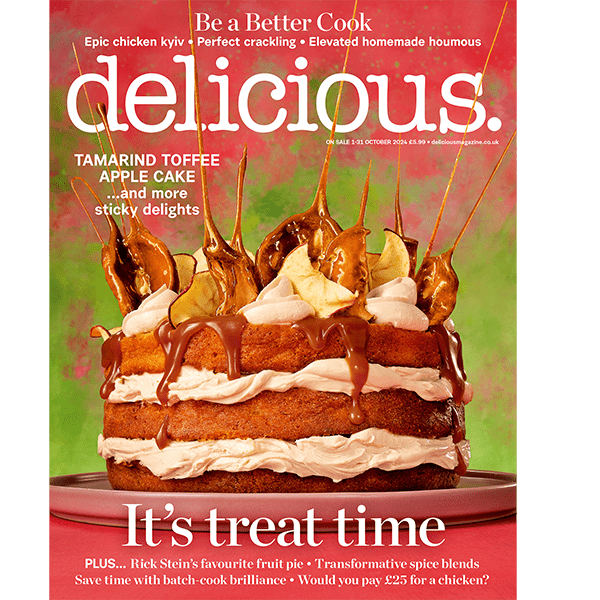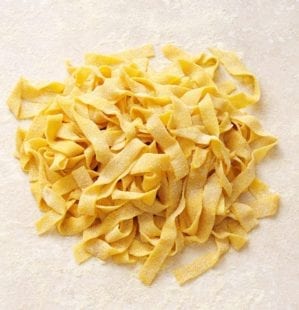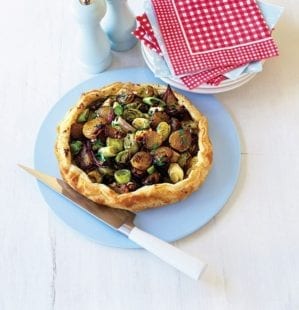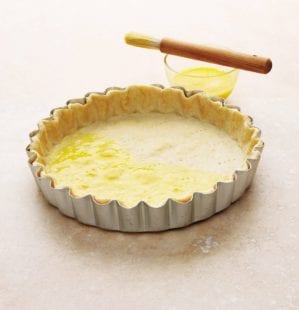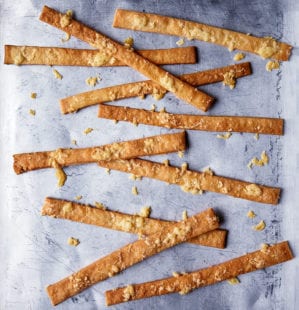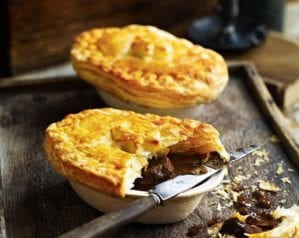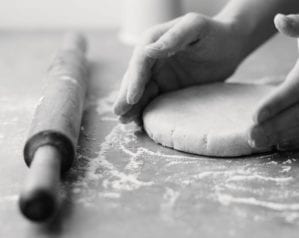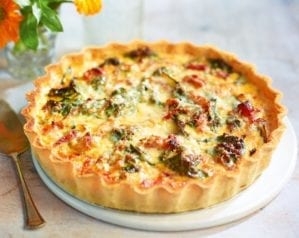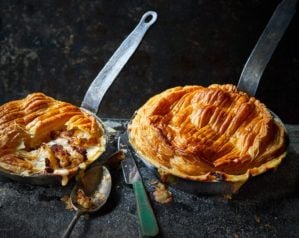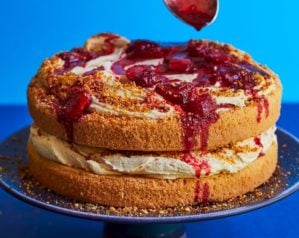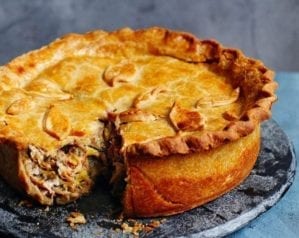
Easy flaky pastry
- Published: 12 Apr 23
- Updated: 18 Mar 24
This is the only flaky pastry recipe you’ll ever need. Sitting in the sweet spot between easy shortcrust and challenging puff, flaky pastry is something any home cook can master. It knocks anything shop-bought out of the park!
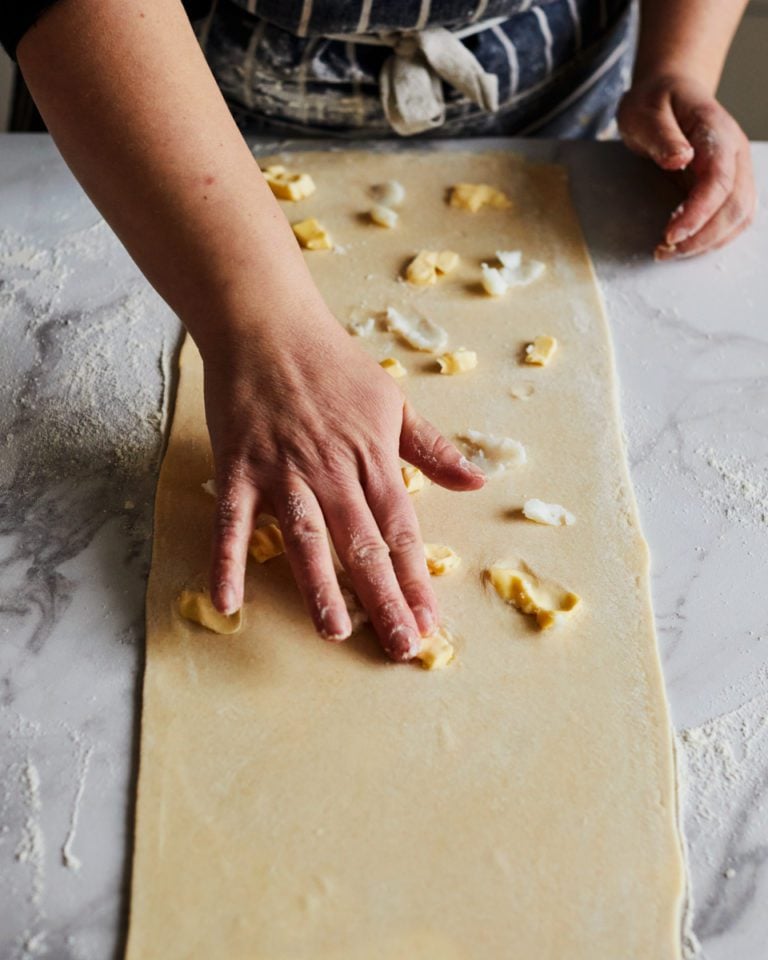
You can make this pastry vegetarian, follow our tips below in the FAQs.
Use this pastry to make moreish mustard cheese straws.
-
Makes about 400g (enough for a pie that serves 4)
-
Hands-on time 45 min, plus 1 hour chilling
Ingredients
- 225g plain flour, plus extra to dust
- 80g lard, cut into small chunks (or a vegetarian alternative, see FAQs)
- 80g unsalted butter, cut into small chunks
Method
- Put the flour in a bowl with a pinch of salt. Add half the chunks of lard and butter, then rub them in with your fingertips to create a breadcrumb-like texture. Add around 6-8 tbsp ice cold water, a little at a time, until you form a dough (you may not need all the water as it depends on your flour, so go slowly). You can also do this step in a food processor.
- On a floured work surface, roll the dough out into a large rectangle (about 45cm x 23cm), with one of the short ends closest to you. Dot a third of the remaining butter and lard over the bottom two thirds of the pastry. Fold the top third of the pastry over the top to cover half the butter/lard pieces, then fold the bottom third up to make a neat rectangle with all the butter/lard enclosed. Seal the edges, pressing down with a rolling pin. Wrap the pastry with baking paper or put it in a food bag and transfer to the fridge to chill for 10 minutes.
- Remove the pastry from the fridge, unwrap it and put it on the work surface. Turn the pastry 90 degrees clockwise. Repeat the rolling out, dotting with lard and butter, folding, sealing, wrapping and chilling in step 2.
- Repeat this process a third time to use up all the remaining butter and lard, again turning it 90 degrees clockwise.
- Repeat once more but without adding any fat then wrap and chill for at least 30 minutes before using.
- Recipe from May 2023 Issue
Nutrition
- Calories
- 513kcals
- Fat
- 31.4g (9.8g saturated)
- Protein
- 10.2g
- Carbohydrates
- 45.5g (1.9g sugars)
- Fibre
- 3.9g
- Salt
- 0.1g
FAQs
What is flaky pastry?
Flaky pastry is made by rubbing fat into flour then adding water to make a dough – a process instantly recognisable to any regular shortcrust pastry maker. It’s then taken one step further as small chunks of fat are layered into the dough through a process of rolls and folds. As the amount of additional fat is relatively small and added as little chunks, the process is easily manageable (and most crucially, you only have to do it a few times!). It won’t achieve the sky-high towering rise of proper puff pastry, but it will create a rich, buttery texture that flakes into shards when cut into. It’s perfect for pies, sheet tarts and turnovers.
Can I make this pastry vegetarian?
Butter gives pastry a better flavour but lard gives it flakier texture. So naturally, we use a 50:50 blend for the best of both worlds. If you’re vegetarian you can just use butter or a 50:50 mixture of vegetable fat and butter.
How do I stop the pastry sticking to the work surface?
Flour is your friend. The last thing you want is for your pastry to stick to the work surface or your rolling pin because as you pull it away you’ll tear through all those beautiful layers. Scatter a good dusting of flour on the work surface and rolling pin, making sure you can slide the pastry on the work surface easily. If a patch of fat breaks through the top of the dough while you’re rolling out, simply scatter a little flour over the patch to prevent it sticking to your rolling pin. Once you’ve rolled out the pastry, you can use a pastry brush to remove any excess flour from the surface before adding a layer of fat and doing a fold (you don’t want a floury layer in the final pastry).
delicious. tips
Start with butter/lard straight from the fridge, but allow it to warm up and soften slightly for the folding and rolling – but don’t let it get so warm it melts.
Cut the fat into thin pieces. If the fat is added to the dough in thick chunks, it is more likely to break through the layers of dough during rolling rather than spreading out between them. Keep them thin and this won’t be an issue.
Ridge then roll. If you start rolling at one end of the pastry, you run the risk of squeezing and pushing all of the fat forwards. Instead, ‘ridge’ the pastry with your rolling pin first to get things going. Simply press the pin into your pastry gently a few times, evenly spaced up the pastry to create a wavy ridged effect. It will then be easier to roll out neatly.
Apply even pressure when rolling. Evenly rolled dough will have straight sides. Not only will this mean the layers of fat are equally spread within the dough, but it will also mean you can fold the dough straight on top of itself to continue with more even layers. If your pastry begins to curve you’re probably pressing down more on one side than the other. Practice makes perfect so don’t worry about this too much when you first try, but a simple way to ensure an even pressure is to use a rolling pin with thickness guides.Once the pastry is made, you can wrap and freeze it for up to 3 months.
Flaky pastry is made by rolling little chunks of fat in between the layers of pastry, which create little pockets of space which allow the air to expand and ‘puff up’ between the layers. This is known as lamination, and is what gives things like croissants its wonderful flakiness (instead of the crumbliness of shortcrust). Good lamination is easy to achieve when you keep in mind these four simple things…
Buy ingredients online
Rate & review
Rate
Reviews
Subscribe to our magazine
Food stories, skills and tested recipes, straight to your door... Enjoy 5 issues for just £5 with our special introductory offer.
Subscribe
Unleash your inner chef
Looking for inspiration? Receive the latest recipes with our newsletter
